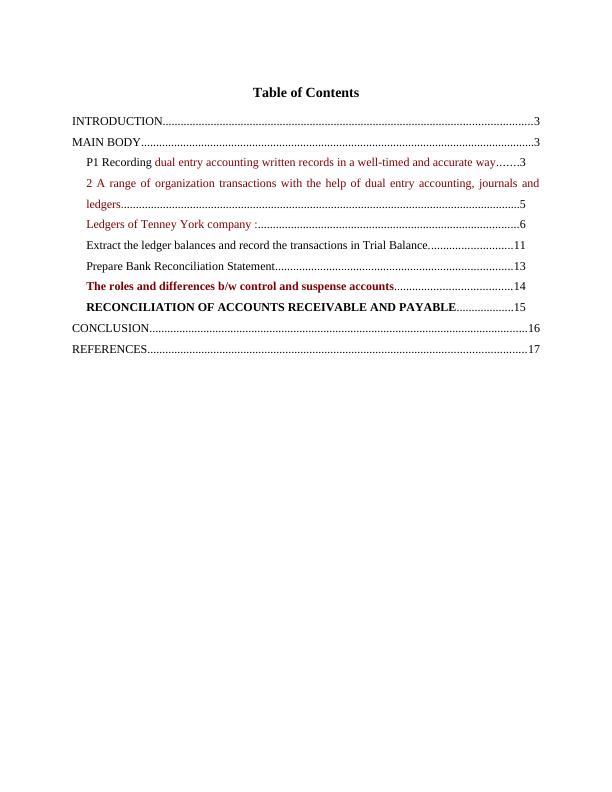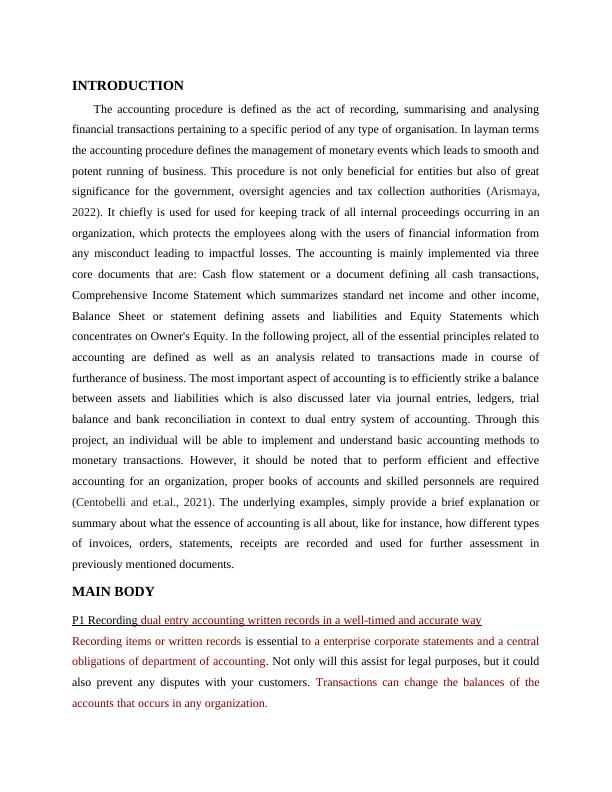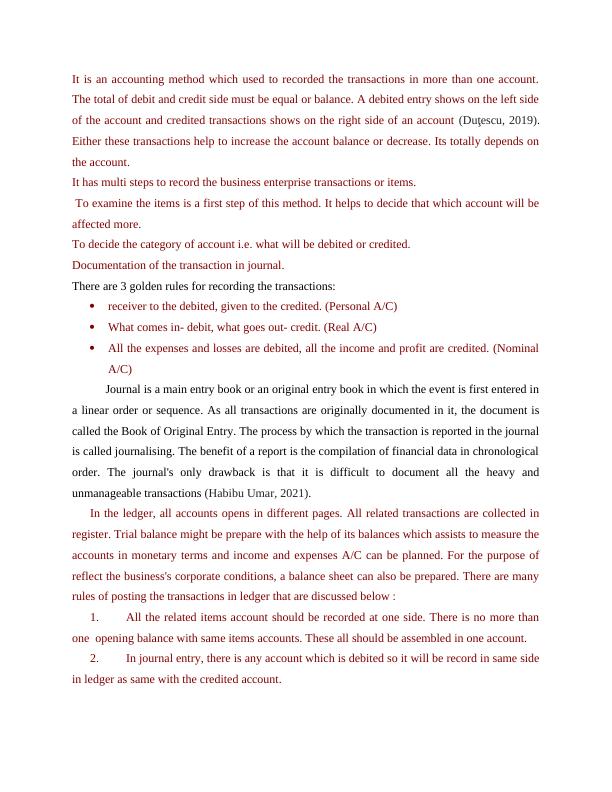Dual Entry Accounting: Recording, Journals, Ledgers, and Trial Balance
18 Pages3752 Words53 Views
Added on 2023-06-09
About This Document
This article explains the importance of efficient accounting for an organization and the components of dual entry accounting such as recording, journals, ledgers, and trial balance. It provides examples and ledger balances of Tenney York company. It also covers how to prepare a bank reconciliation statement and reconcile accounts receivable and payable.
Dual Entry Accounting: Recording, Journals, Ledgers, and Trial Balance
Added on 2023-06-09
ShareRelated Documents
End of preview
Want to access all the pages? Upload your documents or become a member.
Financial Accounting Principles: Book-keeping, Journals, Ledgers, and Control Reconciliation Statement
|13
|3410
|247
Recording Financial Transactions
|18
|4145
|147
Introduction to financial accounting : Assignment Sample
|14
|4333
|109
Financial Accounting INTRODUCTION 1
|21
|5682
|262
Financial Accounting
|20
|4294
|65
Financial Accounting: Concepts and Techniques
|21
|4301
|64




